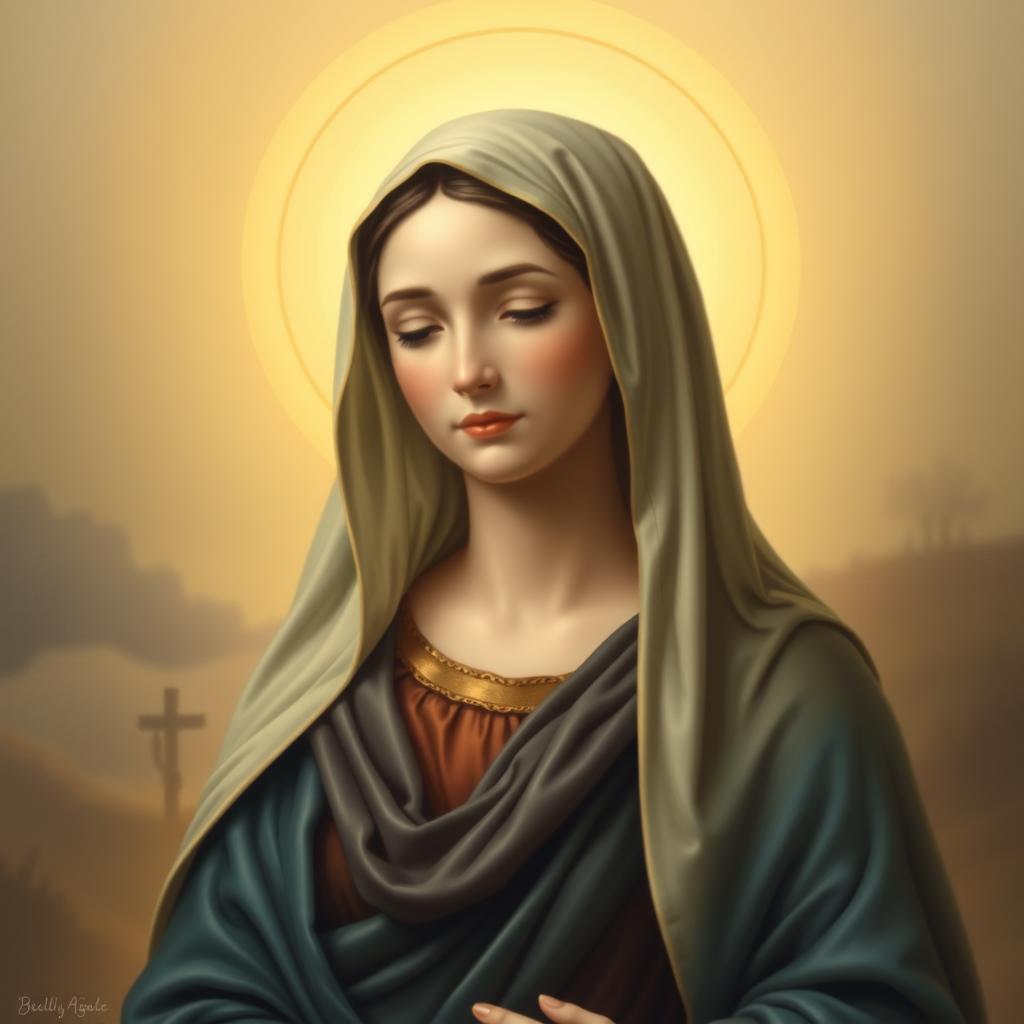Exploring Mary, the mother of Jesus, shows her key role in Christianity. She is highly respected by many churches. Learn more about the Blessed virgin Mary in the Bible.
Many churches, like the Eastern and Oriental Orthodox, Catholic, and others, honor Mary deeply. They call her the Mother of God among other titles.
Learning about Mary’s role in the Bible helps us understand her importance. It shows why she is so revered in Christian tradition.
Key Takeaways
- Mary is a central figure in Christianity, revered by multiple denominations.
- She is known by various titles, reflecting her importance in Christian tradition.
- The significance of Mary is deeply rooted in her role as the mother of Jesus.
- Different Christian churches have their own ways of venerating Mary.
- Mary’s importance extends beyond her biblical context into Christian practice.
The Divine Selection of Mary
The story of Mary’s selection shows her importance. The Bible tells us about her family and her role. It shows her connection to the priestly and royal lines.
Mary’s Lineage and Prophetic Fulfillment
Mary’s family history is detailed in the Gospels. The Gospel of Luke says she was related to Elizabeth, Zechariah’s wife. This shows her link to the priestly line of Aaron.
Some believe Mary was also from the royal Davidic line. This would mean she was from the Tribe of Judah. This connection could fulfill Old Testament prophecies about the Messiah’s ancestry.
Mary’s family background is key to understanding her role. It shows she was chosen to fulfill ancient prophecies. The Old Testament said the Messiah would come from David’s line (2 Samuel 7:12-13, Isaiah 9:7).
Mary’s connection to this line through Joseph and possibly herself, fulfills these prophecies.
Key aspects of Mary’s lineage include:
- Connection to the priestly line through Elizabeth
- Possible connection to the royal Davidic line
- Fulfillment of Old Testament prophecies
God’s Perfect Choice for the Mother of Jesus
Mary was chosen by God to be Jesus’s mother. The Gospel of Luke tells us about the Annunciation. An angel named Gabriel told Mary she would have a son, Jesus (Luke 1:26-38).
“Behold, I am the servant of the Lord; let it be to me according to your word.” (Luke 1:38)
Mary’s response showed her faith and obedience. This made her the perfect choice for Jesus’s mother. Her selection highlights the miraculous nature of Jesus’s birth.
In conclusion, Mary’s selection as Jesus’s mother is special. It’s based on her lineage and her role in fulfilling prophecies. Her faith and obedience make her a key figure in Christian theology.
The Blessed Virgin Mary in the Bible: Complete Scriptural References
The Bible tells us a lot about Mary, showing her key role in saving us. Her story in the Bible is more than just being Jesus’ mom.
Old Testament Prefigurements of Mary
In the Old Testament, there are hints about Mary. For example, Genesis 3:15 talks about a fight between the serpent and a woman. This is seen as a sign of Mary’s future role in saving us.
New Testament Appearances and Mentions
The New Testament talks about Mary directly, especially in Luke and John’s Gospels. Luke mentions Mary by name twelve times. This gives us a good look at her thoughts, actions, and her role in Jesus’ life.
| Gospel | Number of Mentions | Significant References |
|---|---|---|
| Luke | 12 | Luke 1:27, 1:38, 1:46-55 |
| John | 4 | John 2:1-5, 19:25-27 |
| Matthew | 3 | Matthew 1:18-25, 2:11 |
Mary’s Words Recorded in Scripture
Mary’s most famous saying is the Magnificat (Luke 1:46-55). It shows her faith and humility. This passage tells us how Mary felt about her role in God’s plan.
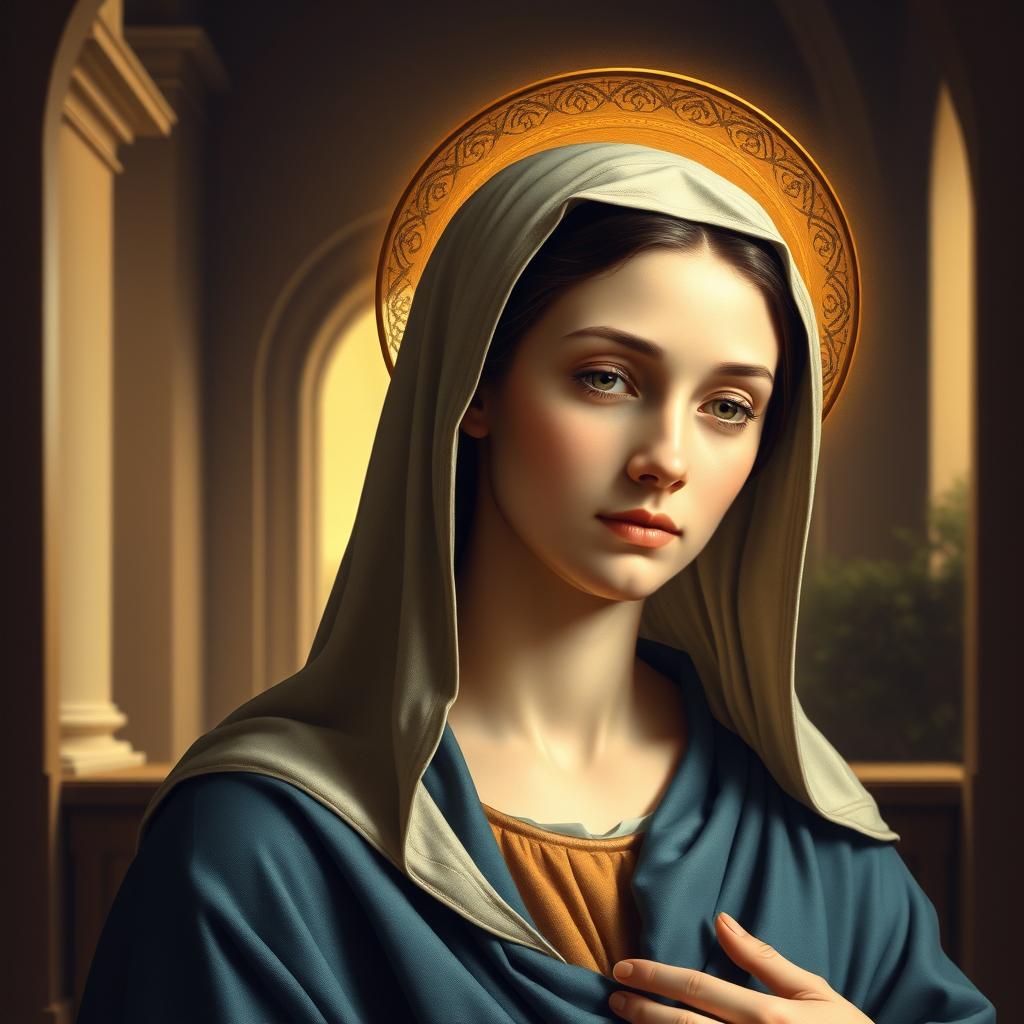
Looking at these Bible references helps us understand Mary’s big role in the story of salvation. She is very important in Christian beliefs.
The Annunciation: Heaven Meets Earth
The Annunciation, as told in Luke 1:26-38, marks a key moment in history. It’s where heaven and earth come together. This event introduces Gabriel’s message to Mary and her important role in God’s plan.
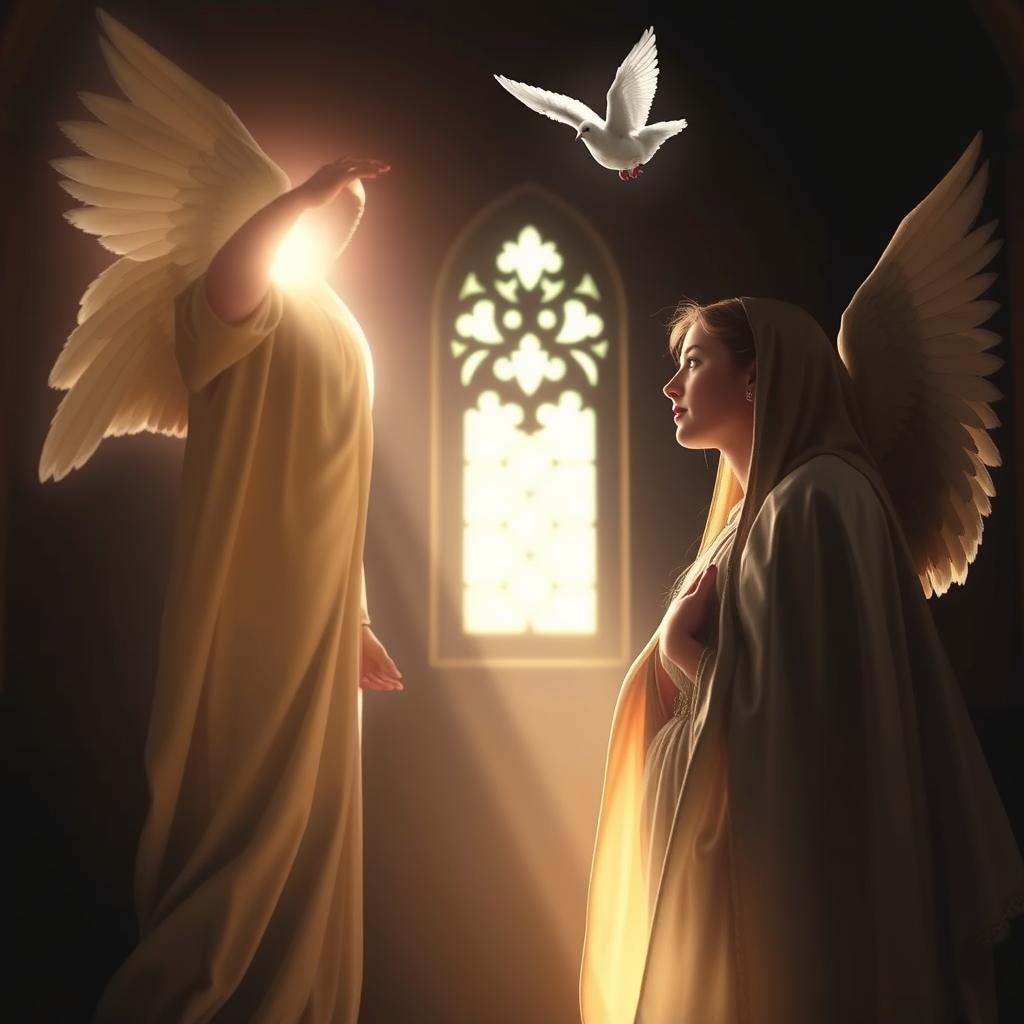
Gabriel’s Message and Mary’s Response
Gabriel’s greeting to Mary is filled with respect and revelation. He calls her “full of grace,” showing her special place in God’s plan. Mary, at first unsure, then shows deep faith by saying, “I am the handmaid of the Lord; let it be to me according to your word.”
Mary’s answer is not just about faith. It also shows her readiness to serve God, even when it’s hard. Her words show she understands her role as a servant of the Lord.
The Theological Significance of Mary’s “Yes”
Mary’s agreement to God’s plan is a key part of Christian belief. It shows her trust in God’s will and her role in saving humanity. Her “yes” is a sign of faith, obedience, and trust in God’s care.
By saying “yes” to being Jesus’ mother, Mary joins the mystery of the Incarnation. Her choice is not just personal. It’s a crucial moment in salvation history, showing the value of human cooperation with divine grace.
The Visitation: Mary’s First Act as Christ-Bearer
Mary traveled to visit her cousin Elizabeth, starting a journey that would show her role in salvation. This visit, in Luke 1:39-56, highlights her faith and obedience.

Elizabeth’s Greeting: “Mother of My Lord”
When Mary arrived, Elizabeth greeted her with a deep acknowledgment: “the mother of my Lord” (Luke 1:43). This greeting is key because it recognizes Mary’s role in bearing Jesus. It shows her importance in the story of salvation.
Elizabeth’s words, filled with the Holy Spirit, confirm the miraculous birth of Jesus. They also highlight the unborn John the Baptist’s role. His leap in Elizabeth’s womb shows the connection between the Old and New Testaments.
The Magnificat: Mary’s Prophetic Canticle
Mary responded to Elizabeth’s greeting with the Magnificat, a song of praise (Luke 1:46-55). This song shows her faith, humility, and understanding of God’s plan. It echoes Old Testament themes, like Hannah’s prayer in 1 Samuel 2:1-10.
| Theme | Magnificat (Luke 1:46-55) | Hannah’s Prayer (1 Samuel 2:1-10) |
|---|---|---|
| God’s Mercy | Magnifies God’s mercy and faithfulness | Praises God for answering prayer |
| Humility | Emphasizes Mary’s humility and God’s favor | Reflects Hannah’s personal humility and trust |
Mary’s Magnificat is more than a personal expression of joy. It’s a declaration of God’s plan for salvation. It talks about God’s plan to uplift the lowly and humble the mighty, showing Jesus’ teachings and God’s kingdom.
In conclusion, the visitation scene is a powerful story of faith, obedience, and God’s plan. It shows Mary’s role in salvation history and her importance as Jesus’ mother.
Mary and Joseph in the Bible: A Divinely Appointed Partnership
Mary and Joseph’s bond shows their strong faith and trust in God. Their partnership, chosen by God, was key to saving humanity.
Joseph’s Acceptance of God’s Plan
Joseph, known as the just man, showed great faith and obedience. He accepted God’s plan for Mary’s pregnancy. This was crucial for Mary and Jesus’s safety.
The Gospel of Matthew tells us Joseph followed an angel’s dream. He took Mary as his wife, showing his commitment to care for Jesus’s mother.
The Bible calls Joseph a righteous man who followed God’s commands. His faith and obedience guided him, even when things were hard or strange.
The Holy Family’s Challenges and Faithfulness
The Holy Family, including Mary, Joseph, and Jesus, faced many challenges. Despite these, they stayed true to God’s plan.
The Flight to Egypt
One big challenge was fleeing to Egypt because of King Herod. Joseph’s quick action based on a dream saved them. This shows their trust in God’s care.
Life in Nazareth
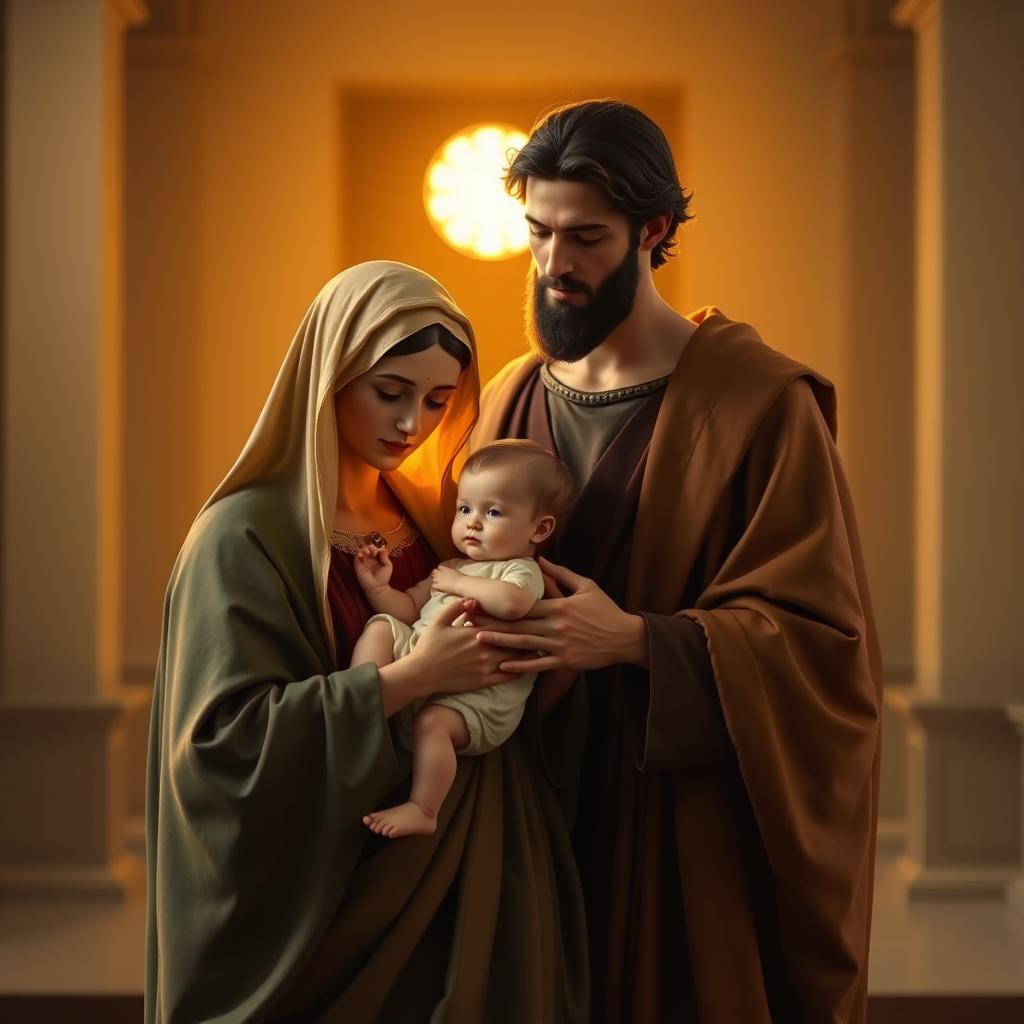 They lived a simple life. The Bible shows their dedication to their roles.
They lived a simple life. The Bible shows their dedication to their roles.
Jesus grew up, and Mary and Joseph taught him. Their life, full of joy and sorrow, showed the power of faith and perseverance.
Mary’s Role in Jesus’s Birth and Childhood
The story of Jesus’s birth and early years is closely tied to Mary’s experiences. As Jesus’s mother, Mary did more than just give birth to him. She played a key role in his early life, including the nativity and the presentation in the temple.
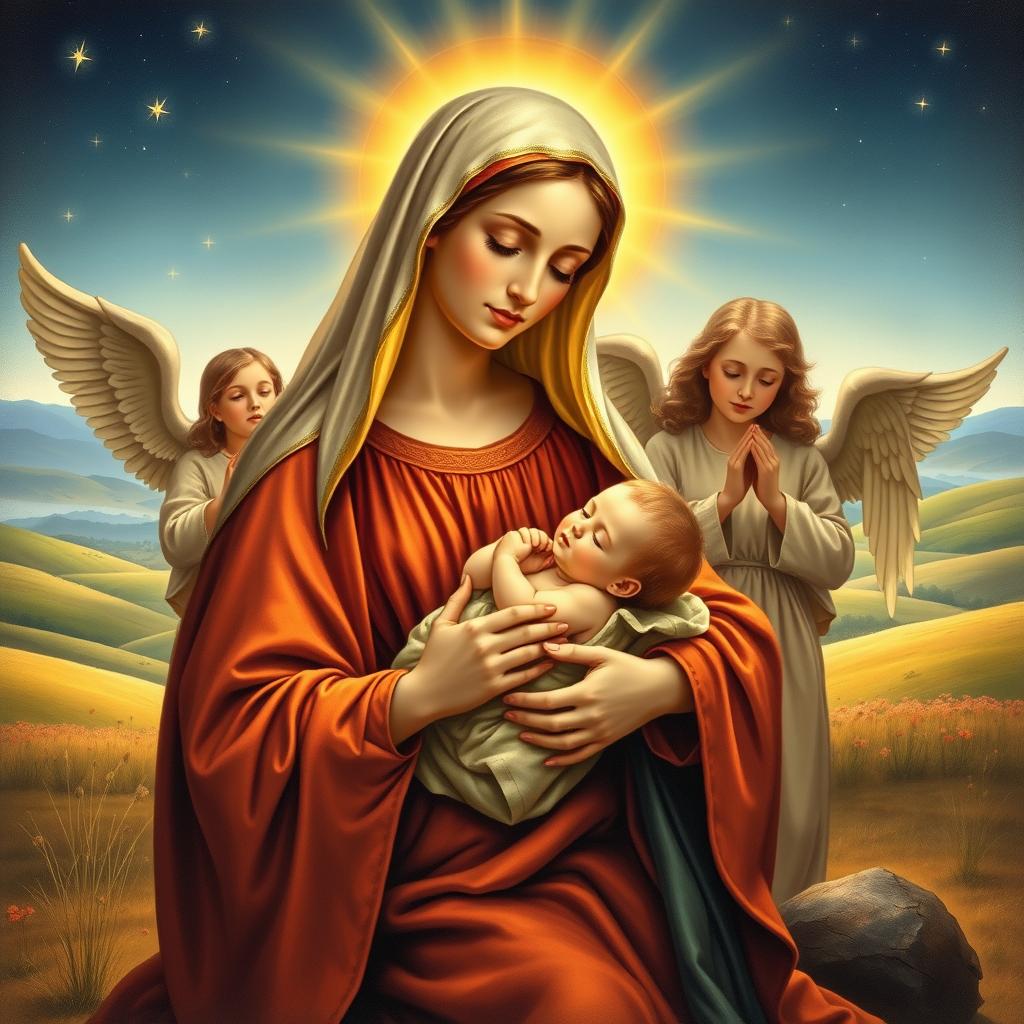
The Nativity in Bethlehem (Luke 2:1-20)
The nativity scene is a famous image in Christian tradition. Mary and Joseph went to Bethlehem because of a census. It was there that Jesus was born, in a manger, because there was no room at the inn. This humble setting shows the simple circumstances of Jesus’s birth. Mary’s presence at the nativity shows her role as Jesus’s mother and her witness to his miraculous birth.
The Presentation and Prophecies in the Temple (Luke 2:22-38)
After Jesus was born, Mary and Joseph took him to the temple as Jewish law required. There, they met Simeon and Anna, who prophesied about Jesus’s future. Simeon’s prophecy especially highlighted Jesus’s importance and the sorrow Mary would face. This event predicted the challenges Mary and Jesus would encounter. The presentation in the temple was a moment of revelation about Jesus’s identity and mission.
In both the nativity and the presentation, Mary’s role was crucial. She was not just watching; she was actively involved in Jesus’s early life. Her faith and obedience to God’s plan are clear in these stories.
Mary the Mother of God: Theological Foundations
Mary being the Mother of God is a key part of Christian belief. It’s supported by important church councils and the Bible. This belief is not just old news but is still important today for Christians.
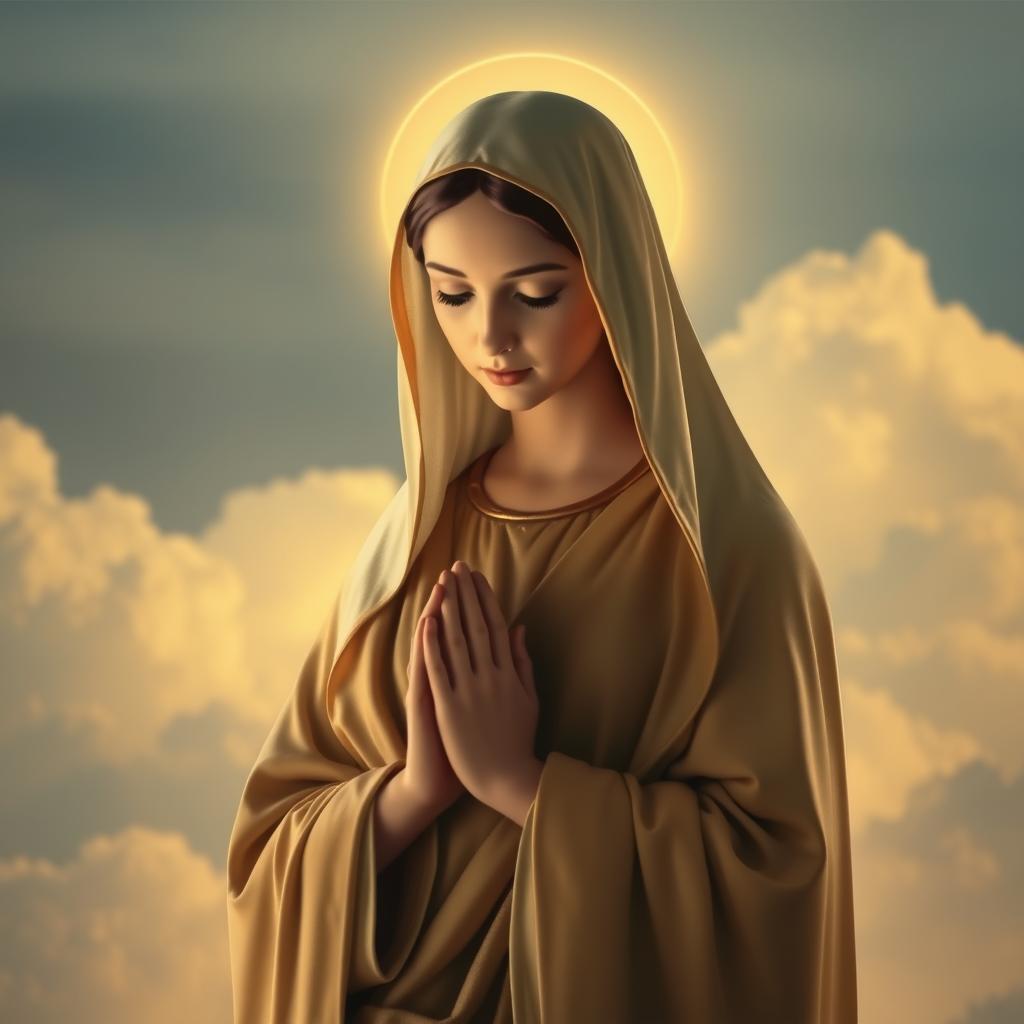
The idea of Mary as the Mother of God started early in Christianity. A big moment was the Council of Ephesus in 431 AD.
The Council of Ephesus and the Theotokos Title
The Council of Ephesus was key in giving Mary the title Theotokos, or “God-bearer.” This was to settle a debate about Christ’s nature. By calling Mary Theotokos, the council showed Jesus is both human and divine.
This title was more than just a nice name. It was a deep theological statement about Jesus’s birth. It showed Mary’s big role in God becoming human.
Biblical Support for Mary’s Divine Motherhood
The Bible tells us about Mary’s role as the Mother of God. This is especially clear in Luke and John’s Gospels. In Luke 1:26-38, Mary agrees to carry Jesus, who is called “the Son of the Most High.”
John’s Gospel also supports this view. It says Jesus is the Word made flesh (John 1:14). This helps us see Mary’s part in Jesus’s story.
Mary’s Perpetual Virginity in Scripture
Believing in Mary’s perpetual virginity is also important. This idea comes from the Bible, especially how Jesus was born. Matthew and Luke tell us Jesus was born of a virgin.
This belief shows Mary’s special place in history. It highlights her complete commitment to God’s will.
In summary, the idea of Mary as the Mother of God comes from church councils and the Bible. The Council of Ephesus and the stories of Jesus’s birth give us a strong reason to believe in her role in Christianity.
Mary at the Wedding at Cana: Beginning of Jesus’s Public Ministry
At the Wedding at Cana, Mary showed her caring side by asking Jesus to help. This led to Jesus’s first miracle. This event, found in John 2:1-11, shows Mary’s faith and influence. It also marks the start of Jesus’s public work.
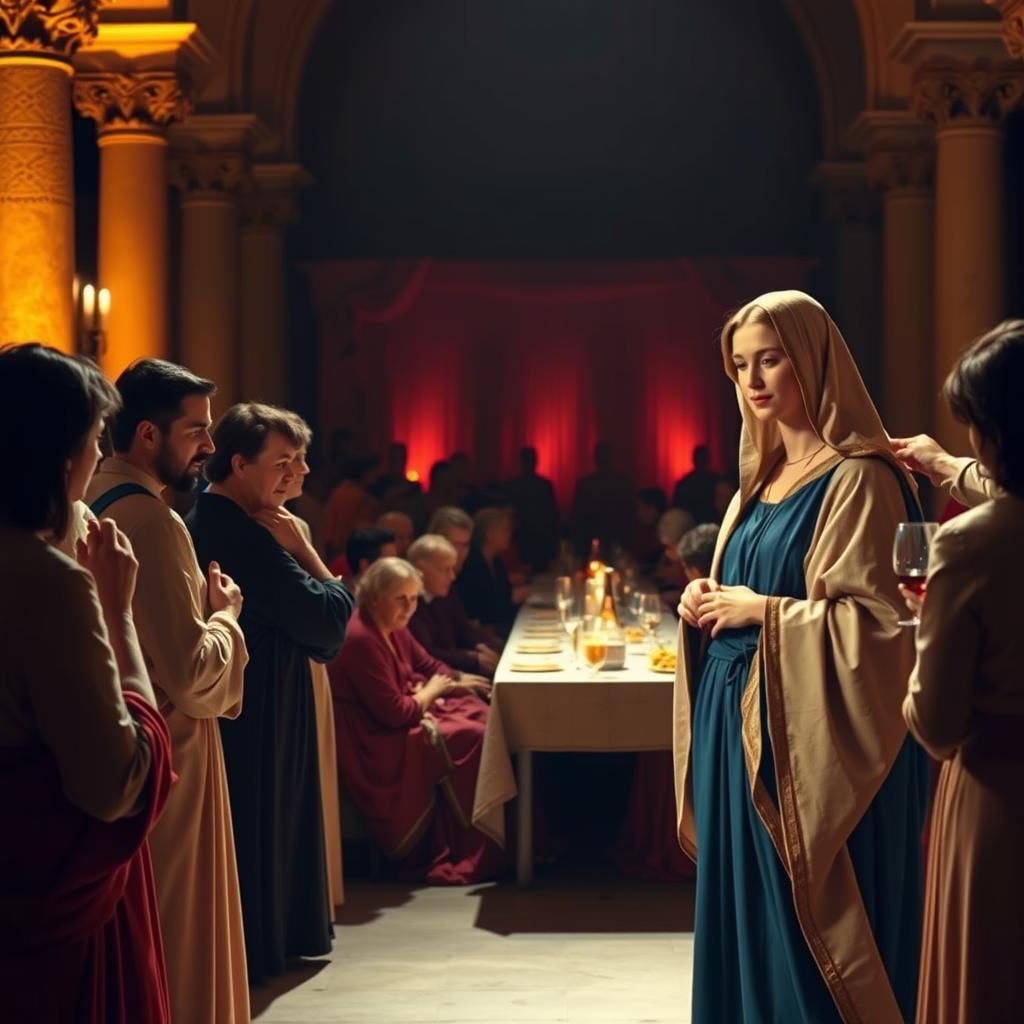
Mary’s Intercession and Faith
Mary’s request at the Wedding at Cana is key. When there was no more wine, she told Jesus, “They have no more wine” (John 2:3). This shows her faith in Jesus’s power to solve problems.
Jesus seemed to brush her off at first, saying, “Woman, what concern is that of yours to me? My hour has not yet come” (John 2:4). But Mary was not deterred. She told the servants to follow Jesus’s instructions, showing her trust in him.
Mary’s faith was unwavering. She took action, showing her belief in Jesus. This shows her role as an intercessor and her understanding of Jesus’s divine nature.
The Significance of Jesus’s First Miracle Through Mary’s Request
The miracle at Cana was a big deal for several reasons. It was Jesus’s first public miracle, showing his divine power. It was also a direct result of Mary’s request, highlighting her influence and faith.
By turning water into wine, Jesus showed his compassion and divine authority. This miracle was a response to Mary’s request. It shows how Mary’s faith and intercession led to Jesus’s actions.
The Wedding at Cana teaches us about faith, intercession, and trust in God’s plan. Mary’s actions at Cana inspire believers. They show the value of praying and interceding for others.
Mary at the Foot of the Cross: The Sword of Sorrow
Mary stood at the foot of the cross, showing the deepest love and sorrow of a mother. This moment is very moving in the New Testament. It shows Mary’s strong love for her son Jesus, even when he was suffering so much.
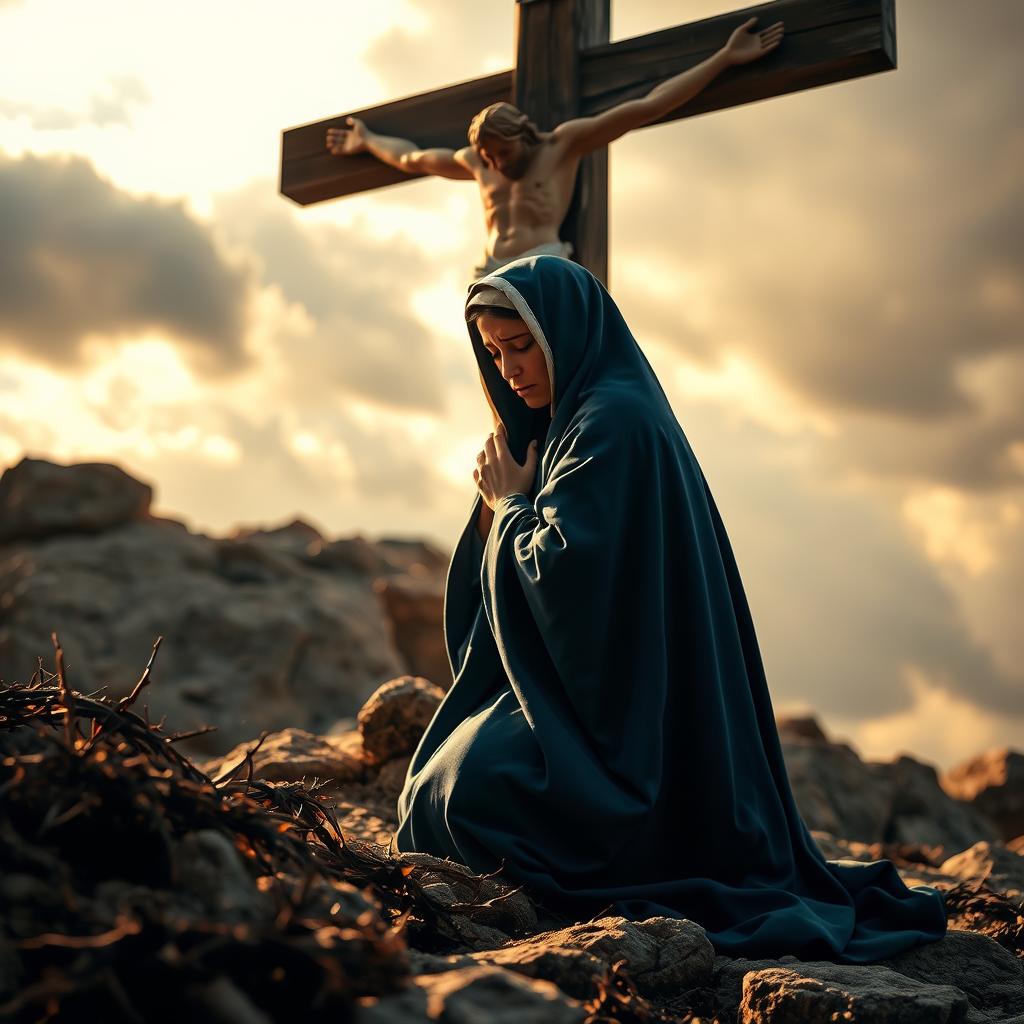
Mary’s presence at the crucifixion is very important. It was here that Simeon’s prophecy, made at Jesus’ presentation in the temple, came true.
Fulfillment of Simeon’s Prophecy
Simeon had said, “and a sword will pierce your own soul too” (Luke 2:35). This happened as Mary watched her son suffer on the cross. It showed how deeply Mary was involved in Jesus’ mission and her own pain.
Jesus Entrusts His Mother to John
As Jesus was on the cross, he asked John, a disciple, to take care of his mother. He said, “Woman, behold your son!” and to John, “Behold, your mother!” (John 19:26-27). This showed Jesus’ care for his mother and also showed the family of God. Believers become part of Jesus’ family through faith.
Mary’s Witness to the Redemption
Mary’s presence at the cross made her a witness to Jesus’ sacrifice. Her role in salvation history is not just as Jesus’ mother. It’s also as a part of the mystery of redemption.
Thinking about Mary at the crucifixion reminds us of Jesus’ love and sacrifice. Mary’s faithfulness at the cross is a powerful example. It inspires believers to stay strong in their faith journeys.
Mary’s Immaculate Conception: Biblical Foundations
To understand Mary’s Immaculate Conception, we must look at the Bible. This idea is key to Catholic beliefs. It says Mary, Jesus’ mother, was born without original sin. Several important scriptures and interpretations back this up.
The angel Gabriel’s greeting to Mary in Luke 1:28 is a key text. He calls her “full of grace,” a phrase with deep meaning.
The Angel’s Greeting: “Full of Grace” (Luke 1:28)
The greeting “full of grace” (kecharitōmenē in Greek) means Mary is filled with God’s grace. This special description shows her unique status and role in salvation. It suggests she was born without sin, making her immaculate.
Being “full of grace” means God’s favor and love are fully on her. This prepares her to carry Jesus. It’s a unique gift that sets her apart.
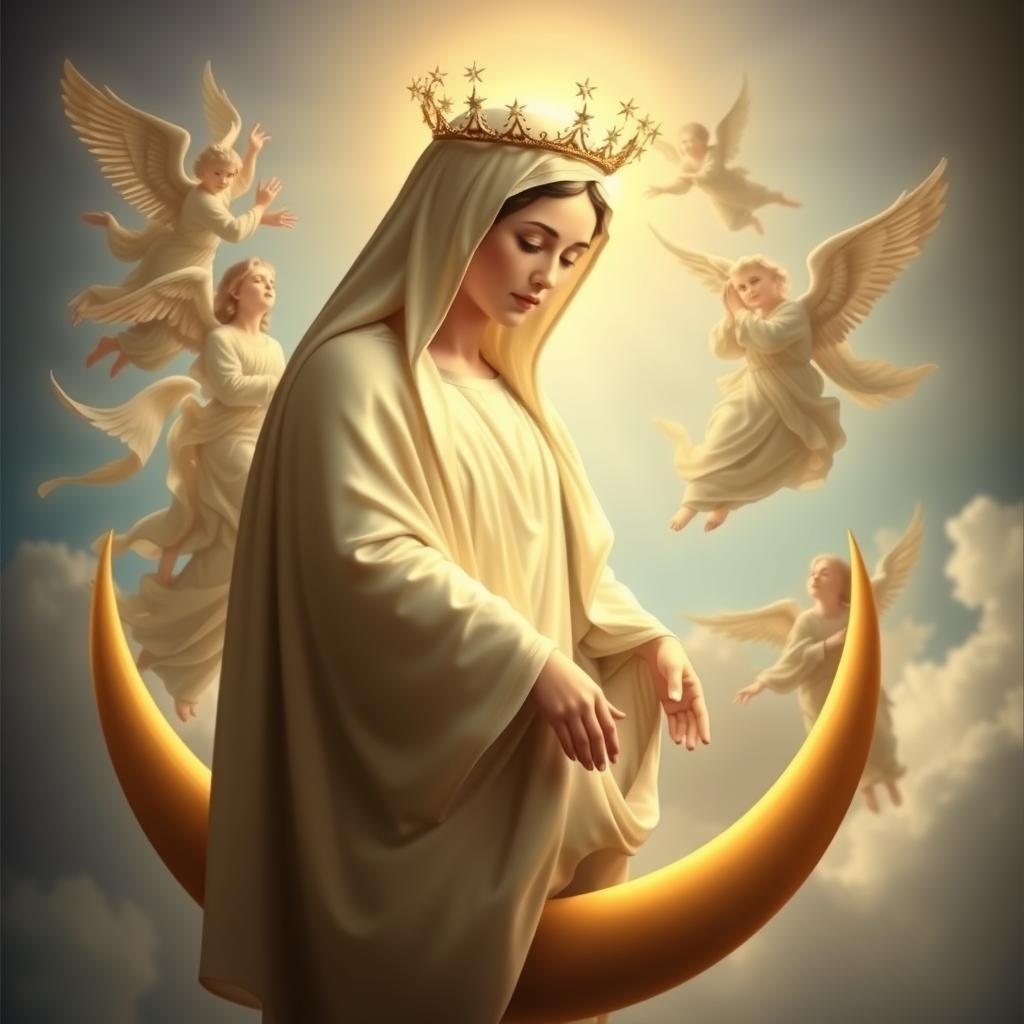
Mary as the New Eve and Ark of the Covenant
Mary’s connection to the Old Testament figures and artifacts is another key point. In Revelation 12:1, she is seen as the woman clothed with the sun, like the New Eve.
The story of Mary and Eve is rooted in early Christian teachings. Eve was created without sin but fell. Mary, the New Eve, is seen as sinless, especially at her conception. This shows her importance and supports the idea of her Immaculate Conception.
| Biblical Figure | Typological Significance | Relation to Mary’s Immaculate Conception |
|---|---|---|
| Eve | First woman, origin of sin | Mary as the New Eve, sinless and immaculate |
| Ark of the Covenant | Symbol of God’s presence, holy and sanctified | Mary as the Ark, bearing Jesus, the presence of God |
Mary’s connection to the Ark of the Covenant also highlights her purity. The Ark was a sacred vessel, holding the Ten Commandments. Similarly, Mary, carrying Jesus, is seen as a holy vessel, free from sin.
In conclusion, the Bible provides strong evidence for Mary’s Immaculate Conception. The angel’s greeting, her role as the New Eve, and her link to the Ark of the Covenant all support her sinless nature.
Mary’s Role in Salvation History
Mary’s role in saving humanity is key in Christian beliefs. Her faith and obedience show her importance in God’s plan. To grasp her role, we must look at the Bible’s teachings about her.
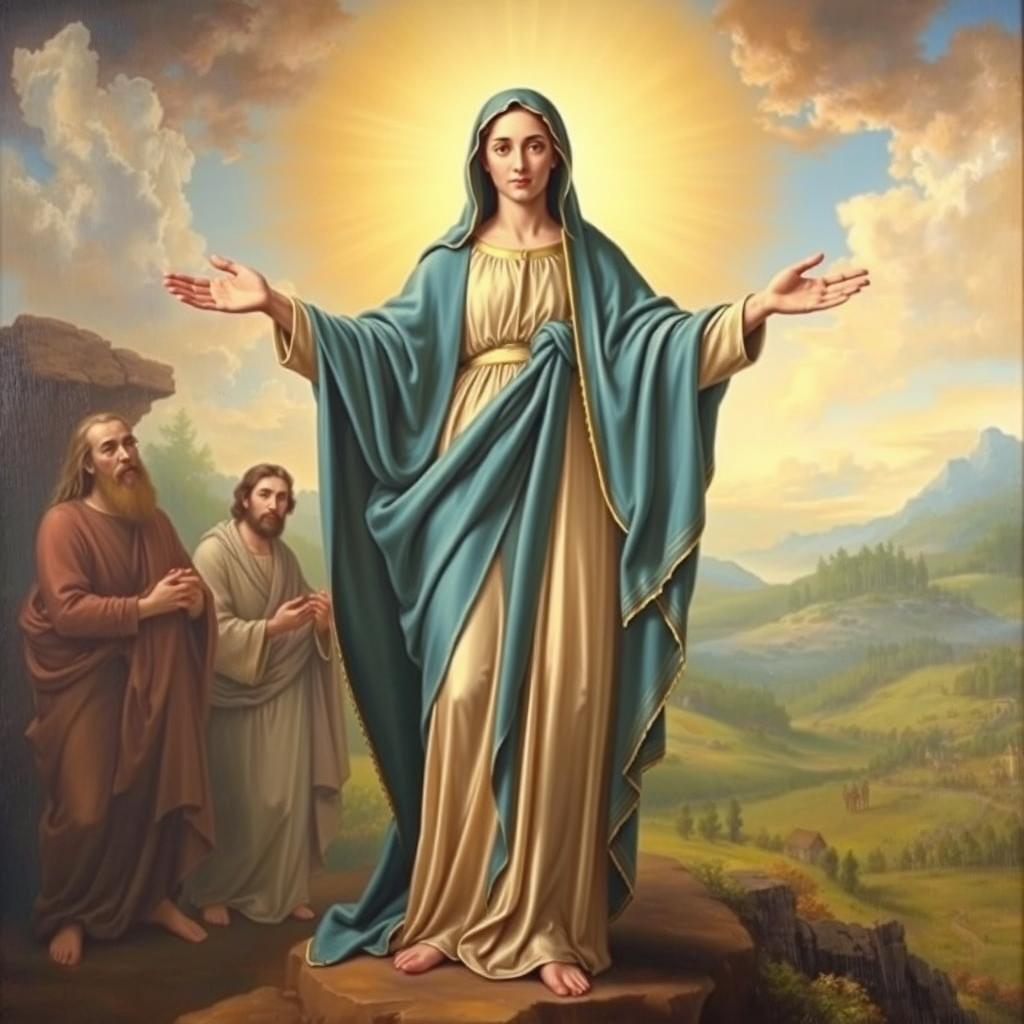
The Promise in Genesis 3:15 and Mary’s Part
Genesis 3:15 is seen as the first gospel, or protoevangelium. It talks about the fight between the serpent and the woman, hinting at Jesus’ victory over sin and Satan. As Jesus’ mother, Mary is deeply connected to this promise, playing a vital part in God’s plan.
The link between Genesis 3:15 and Mary is not just a coincidence. It’s a key part of the Bible, showing her role in God’s plan to save us.
| Biblical Reference | Significance | Mary’s Role |
|---|---|---|
| Genesis 3:15 | Protoevangelium, first gospel | Linked to the promise of Jesus Christ |
| Luke 1:26-38 | The Annunciation | Mary’s consent to be the mother of Jesus |
| John 2:1-11 | The Wedding at Cana | Mary’s intercession leading to Jesus’ first miracle |
Mary’s Cooperation in God’s Redemptive Plan
Mary’s role in God’s plan is clear in her responses to divine calls. At the Annunciation, she says, “Behold, I am the servant of the Lord; let it be to me according to your word” (Luke 1:38). This shows her faith and readiness to help God’s plan. Her cooperation is crucial for the Incarnation, when God became human in Jesus Christ.
Throughout her life, Mary keeps helping God’s plan. She supports Jesus through his work, death, and resurrection. Her presence at important moments in Jesus’ life shows her big role in the story of salvation.
In conclusion, Mary’s role in saving humanity is complex. It involves her part in the Genesis 3:15 promise and her ongoing help with God’s plan. Her faith, obedience, and role in the Bible make her very important in Christian beliefs.
Mary in the Early Church and Acts of the Apostles
In the Acts of the Apostles, we see a key moment that shows Mary’s big role in the early Christian group. She was with the apostles, waiting for the Holy Spirit, showing her strong faith and devotion.
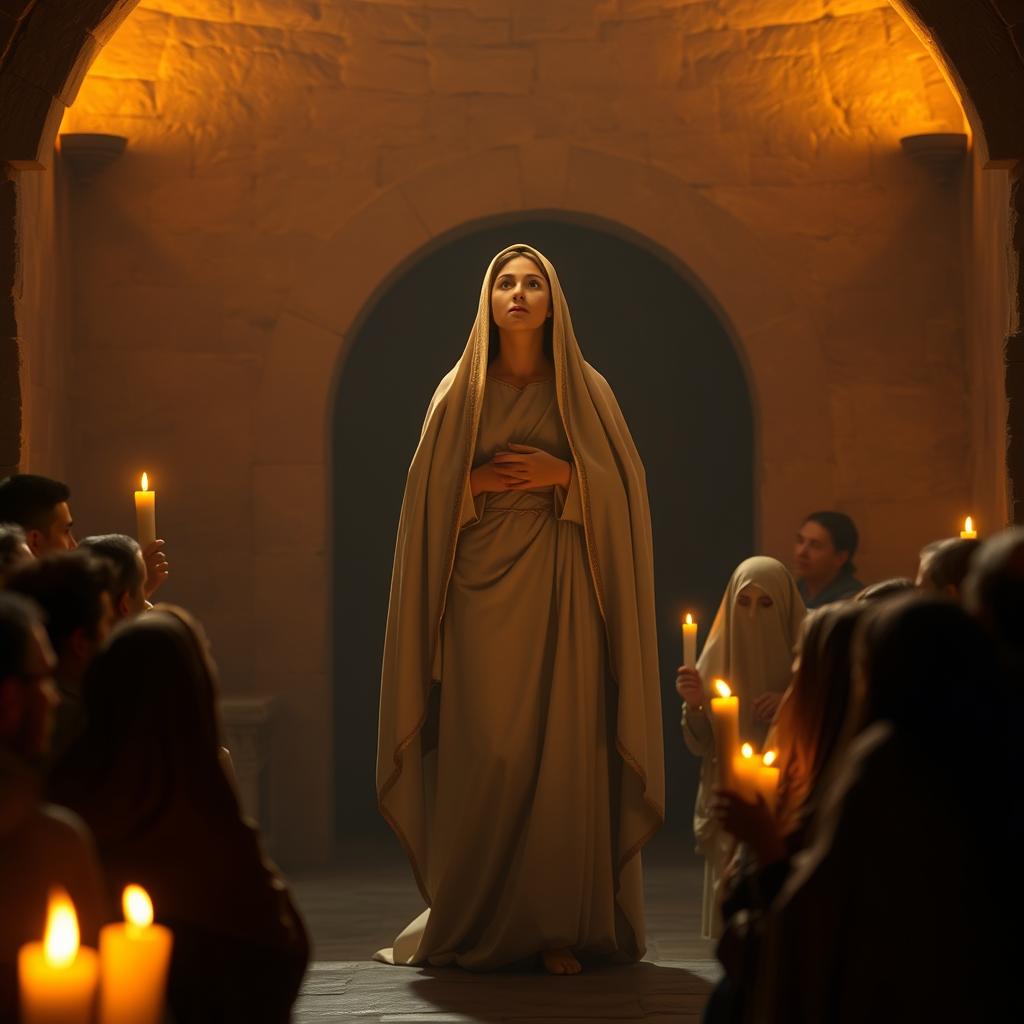
The early Christian group focused on devotion to the apostles’ teaching, fellowship, and prayer, as Acts 2:42 says. Mary being with the apostles on Pentecost shows her key role in this group.
Present at Pentecost (Acts 1:14)
On Pentecost day, Mary was present with the apostles, praying together as they waited for the Holy Spirit. This shows her unity and role in the early Church.
“These all continued with one accord in prayer and supplication, with the women, and Mary the mother of Jesus, and with his brethren.” – Acts 1:14
Pentecost was a big turning point, giving the disciples the power to share Jesus’ teachings. Mary being there shows her close tie to the apostolic community.
Mary’s Influence on the Apostolic Community
Mary’s impact on the early Christian group is clear from her presence and the respect she got. The apostles, taught by Jesus, knew how important Mary’s role was.
- Mary’s faith and devotion were examples for early Christians.
- Being at Pentecost showed unity and Jesus’ mission’s continuation.
- The early Church’s respect for Mary helped start Marian devotion later on.
Mary’s role in the early Church shows her lasting impact. As Jesus’ mother and a faithful follower, Mary’s influence goes beyond the New Testament. It shapes the faith and practices of Christians everywhere.
Conclusion: The Enduring Legacy of the Holy Mother Mary
Reflecting on the Blessed Virgin Mary in the Bible, her lasting impact is clear. Her role as Jesus’ mother has shaped Christian devotion and tradition. Her influence is still felt today.
Mary’s legacy is tied to her faith and obedience to God. Her example teaches us about trust and surrender. Believers worldwide honor her in many ways, showing the depth of Marian devotion.
The Bible highlights Mary’s role in salvation history. Her presence reminds us of God’s love for us. Mary’s legacy will continue to inspire and guide believers for many years.
FAQ
What is the significance of Mary in the Bible?
What is Mary’s lineage, and how does it relate to prophetic expectations?
What are the biblical references to Mary, and where can they be found?
What is the significance of the Annunciation, and how did Mary respond to Gabriel’s message?
What is the Visitation, and what is the significance of Mary’s prophetic canticle, the Magnificat?
What was Mary’s role in Jesus’ birth and childhood, and what events are recorded in the Bible?
Why is Mary referred to as the Mother of God, and what is the theological significance of this title?
What is the significance of Mary’s presence at the Wedding at Cana and her intercession?
What is the significance of Mary’s presence at the Crucifixion, and what prophecy was fulfilled?
What is the doctrine of Mary’s Immaculate Conception, and what are its biblical foundations?
What is Mary’s role in salvation history, and how does it relate to the promise in Genesis 3:15?
What is the significance of Mary’s presence in the early Church, particularly on the day of Pentecost?
Why is Mary a significant figure in Christian devotion and tradition?
End Time Bible Verses and Teaching: Insights
